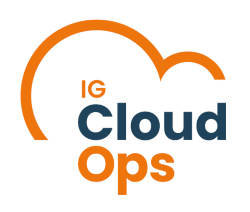AWS and Azure DevOps Challenges: Strategies for Success for IT Directors
The use of DevOps is a hot topic at the moment and there are endless tutorials or tools which allow you to manage the process. This article isn't about that, it doesn't advocate for DevOps one way or the other, it is written to explain what DevOps actually is and remove the buzzwords.
Then discuss what you as an IT director can do to manage a development process and what the common problems are from visibility of whats actually going on to issue investigation and resolution. All of this is within a cloud context where the problems are usually described as code vs infrastructure.
DevOps is meant to bridge the gap between a development team and an operations team and provide continuous release cycles. It's a set of practices and automation throughout the software development lifecycle. Understanding the nuances of DevOps, especially in the context of AWS and Azure, is crucial for IT Directors navigating the complexities of modern cloud-based systems.
Let's start with a bit of background - What is DevOps?
DevOps, short for Development and Operations, is a collaborative approach to software development that seeks to break down traditional silos between software development, IT operations, and quality assurance. It's related to NoOps, see our article on that subject here. It emphasises communication, collaboration, and integration between these functions to streamline the entire software delivery lifecycle. The aim of any DevOps process should be to streamline the process from development to production and move through the stages in between.
So that's the press release definition, but in the real world, this means automation of the different stages and DevOps pipelines from source control to production. If you are an IT manager in a business that provides software to your customers then this all sounds wonderful, but what are the stages involved and where can it go wrong?
Then we can take a look at how you can embrace DevOps and NoOps without losing control of architecture and costs.
What are DevOps pipelines or the stages involved?
DevOps pipelines are a key component of the DevOps methodology, representing a set of automated processes that facilitate the continuous delivery of software. These pipelines orchestrate the steps involved in building, testing, and deploying applications, streamlining the software delivery lifecycle. A typical DevOps pipeline includes the following stages:
-
Code: Developers commit their code changes to a version control system (e.g., GitHub). The pipeline monitors this repository for changes.
-
Build: The pipeline automatically triggers the build process, compiling the source code and creating executable artifacts.
-
Test: Automated testing, including unit tests, integration tests, and sometimes performance or security tests, is performed to ensure the quality of the code.
-
Deploy: Once the code passes the tests, the pipeline deploys it to a staging environment for further testing and validation.
-
Release: If the application performs well in the staging environment, the pipeline can release it to production. This stage may include additional checks and approvals. (Automation of this stage often causes problems, its useful to have a manual action included once approved)
-
Monitoring: Continuous monitoring is an integral part of DevOps pipelines. It involves tracking the application's performance, identifying issues, and providing feedback loops for improvement.
Key benefits of DevOps pipelines include automation, consistency, and the ability to rapidly deliver software updates. Continuous integration and continuous delivery (CI/CD) pipelines, in particular, play a crucial role in achieving a continuous and automated software delivery process, allowing organisations to respond quickly to changing requirements and deliver software in a more efficient and reliable manner.

Where does DevOps start and end?
Overall DevOps is described by different people in different ways, generally, it refers to the process of streamlining and automating your software development and IT operations processes. However, some people argue that it only includes the middle two pillars on the diagram above (They see source control as a traditional IT function and the underlying architecture as not related to development processes), others it's the whole process.
There is then a grey area which surrounds the cloud infrastructure that the application runs on. This then becomes the first problem area.
So why is the underlying cloud architecture and services a grey area:
-
Complexity and Specialization:
- Cloud infrastructure involves a wide array of services, configurations, and best practices. Managing the intricacies of cloud platforms like AWS or Azure requires specialized knowledge in areas such as networking, security, and scalability. This complexity can make it challenging for DevOps teams, which traditionally focus on development and deployment processes, to handle infrastructure management seamlessly.
-
Evolution of Cloud Services:
- Cloud service providers continuously evolve their offerings, introducing new services and features. DevOps teams may find it challenging to keep pace with these rapid changes while simultaneously managing their core responsibilities. This dynamic nature of cloud infrastructure introduces uncertainties and makes it a grey area in the DevOps landscape.
-
Vendor-specific Implementations:
- Different cloud providers have unique implementations and services, and organizations may use a multi-cloud strategy. DevOps teams need to adapt their practices to the specifics of each cloud provider, leading to a potential grey area where standardization is challenging.
-
Shift in Responsibilities:
- Traditionally, operations teams managed infrastructure, but the cloud has introduced a shift in responsibilities. DevOps encourages a collaborative approach, where developers have more involvement in infrastructure aspects. This shift can create ambiguity regarding who is responsible for what in the management of the underlying cloud infrastructure.
- Also, many companies have scaled back their operations teams or merged the responsibilities. Later on you ralise that developers are not interested in managing infrastructure and don't take this into account when taking over responsibility for it.
-
Security and Compliance Concerns:
- Managing the security and compliance aspects of cloud infrastructure adds another layer of complexity. DevOps teams may find it challenging to navigate security configurations and compliance requirements, contributing to the grey area.
Addressing the grey area in cloud infrastructure within DevOps involves strategies like dedicating specialized teams for infrastructure management, adopting automation for infrastructure as code (IaC), and fostering collaboration between development and operations teams. Clear delineation of responsibilities and continuous learning about evolving cloud technologies are essential for successfully navigating this grey area and ensuring a robust and efficient DevOps process.
What are the other DevOps challenges you will face as an IT director?
As an IT director overseeing a SaaS business or working in a corporate IT department, navigating the post-migration landscape presents a distinct set of challenges that demand strategic attention. The completion of a cloud migration and redevelopment often unveils challenges in crucial areas, and as part of the management team, it's essential to address these issues effectively. Here are key facets that IT directors commonly encounter:
1. Performance: After a cloud migration, ensuring optimal system performance becomes paramount. Variations in application performance, latency issues, and unexpected bottlenecks may surface, necessitating a thorough performance analysis and optimization strategy.
2. Cost Management: Controlling and optimizing costs in the cloud environment is a perpetual challenge. The dynamic nature of cloud services can lead to unforeseen expenses. Effective cost management strategies, such as resource optimization and budget monitoring, are crucial for financial sustainability.
3. In-House Knowledge: The shift to the cloud often requires a corresponding shift in the skill sets of the in-house team. Gaps in knowledge related to cloud technologies, best practices, and security measures can impede operations. IT directors need to facilitate ongoing training programs to bridge these knowledge gaps and empower the team with the necessary expertise.
4. Ownership of Problems: In a cloud environment, the delineation of responsibilities between the cloud service provider and the internal team can sometimes be ambiguous. Establishing clear ownership of problems and ensuring a seamless collaboration between the internal team and the cloud provider is crucial for effective issue resolution.
5. Cloud Services Lifecycles: Managing the lifecycle of various cloud services, including updates, patches, and version upgrades, is a continuous challenge. Keeping abreast of changes in the cloud ecosystem, understanding service deprecations, and planning for service transitions are essential to maintaining a resilient and up-to-date infrastructure.
Recognizing these challenges is the first step for an IT director to proactively address them. Implementing robust monitoring and analytics tools, fostering a culture of continuous learning, and establishing clear communication channels between the team and cloud service providers are instrumental in overcoming these challenges and ensuring the sustained success of the cloud-based SaaS business.
Does infrastructure as code work for DevOps?
In theory, infrastructure as code has several advantages:
- Automation and Efficiency: Automatic provisioning and management, ensuring consistency
- Consistency Across Environments: You can ensure that development, testing, staging and Live are all the same
- Version Control and Auditing: The scripts for deployment are usually stored in source control so you can audit history and version etc...
- Scalability and Flexibility: In theory auto-scaling can be built in or added
- Adaptability to Multi-Cloud Environments: As long as you use standard technologies you can port across providers
In practice, this approach often falls down for several reasons not least of which is that often the different environments are not the same for a reason and also keeping the scripts up to date creates a large overhead. Any small change to the infrastructure settings or sizes has to be reflected in the scripts.
Also one of the biggest use cases for this is that you are constantly deploying your cloud infrastructure rather than modifying it over time as it evolves. These scripts are useful to give a baseline environment, but as things progress they get more and more out of date unless time and resource is dedicated to keeping them up to date.
As such separating out and your infrastructure management and DevOps starts to make more sense. Unless you are doing a lot of installs and the environment is stable and doesn't change. But when has that ever been true!
Should cloud architecture and services be managed separately?
In a word, YES! I have to say it should be, developers don't want to manage infrastructure. Also you want to separate the platform from the code base. This enables you to answer questions like. is it infrastructure or is it code when there is an issue.
Challenges in DevOps Team Managing Infrastructure
Problems emerge when DevOps teams are tasked with managing infrastructure alongside their development responsibilities. The complexity of cloud platforms like AWS and Azure demands specialized knowledge in networking, security, and infrastructure scaling. DevOps teams might find themselves stretched thin, juggling both application development and infrastructure management.
Cloud Infrastructure Management: A Separate Foundation for Stability
One fundamental principle for successful DevOps in AWS and Azure is the separation of concerns, particularly in managing cloud infrastructure. The stability of the foundation is pivotal for the success of any DevOps initiative. Cloud resources, such as servers, databases, and networks, need dedicated attention distinct from the application code.
How can CloudOps cloud management platform help you concentrate on DevOps?
We have the experience you need to provide stable cloud infrastructure and get to the root of problems as quickly as possible. We can extend your existing team and help you get back to your roadmap instead of firefighting at every turn.
The CloudOps cloud management platform offers a comprehensive suite of services and expertise to empower your DevOps endeavors, allowing you to focus on innovation and development without the constant challenges of managing and troubleshooting your cloud infrastructure. Here's how CloudOps can help you concentrate on DevOps:
1. Dedicated Cloud Team:
- Benefit: CloudOps provides a dedicated team of experts with extensive experience in managing and advising on various cloud deployments. This ensures that your cloud infrastructure is in capable hands, allowing your internal teams to concentrate on core development tasks.
2. Multi-Cloud Rollup: (AWS, Azure, GCP, Hybrid)
- Benefit: With CloudOps, you can seamlessly manage deployments across multiple cloud platforms such as AWS and Azure, spanning various regions and hybrid environments. This consolidated view simplifies management complexities, promoting a unified and efficient approach to multi-cloud operations.
3. Continuous Monitoring & Alerting:
- Benefit: CloudOps offers robust infrastructure monitoring capabilities, encompassing Kubernetes clusters, nodes, virtual machines (VMs), relational database services (RDS), application services, and more. Continuous monitoring and alerting mechanisms help identify issues promptly, facilitating proactive issue resolution.
4. Application Monitoring:
- Benefit: Utilizing Prometheus-driven application monitoring, CloudOps provides insights into your application's performance from within the application itself. This holistic approach ensures that your development team has comprehensive visibility into application behavior and can make data-driven decisions.
5. Infrastructure as Code (IaC) Support:
- Benefit: CloudOps facilitates the implementation of Infrastructure as Code (IaC), giving you control over when and how this powerful practice is used. IaC support ensures that your infrastructure configurations are version-controlled, reproducible, and aligned with DevOps principles.
6. Stable Infrastructure / Cost-Effective:
- Benefit: CloudOps prioritizes stability and cost-effectiveness in cloud infrastructure management. By optimizing resource utilization and implementing best practices, CloudOps helps maintain a stable environment while ensuring that your cloud costs are kept in check.
7. Security and Compliance:
- Benefit: CloudOps places a strong emphasis on security and compliance. The platform helps enforce security best practices and ensures that your cloud infrastructure meets regulatory requirements, providing a secure foundation for your DevOps initiatives.
8. Empower Development Team:
- Benefit: By entrusting the management of cloud infrastructure to CloudOps, your development team can concentrate on what they do best—innovating and developing applications. This empowerment accelerates development cycles and enhances overall productivity.
9. Release Process Control:
- Benefit: CloudOps offers control over the release process, ensuring that deployments are managed seamlessly. This control allows for a structured and reliable release management process, reducing the likelihood of issues during deployment.
We are confident we can help your team stay on track or get you back on track.
Why? Because we have done it for others, read our case studies and find out how.
Why work with an AWS & Azure partner like IG CloudOps
IG CloudOps' cloud management platform is plug-and-play for both AWS & Azure making cloud adoption even easier and more secure. Our platform allows companies to quickly manage solutions while maintaining the highest levels of security and compliance – all in a cloud environment that is optimised for sustainability.
We also have a team of cloud experts available for the support and advisory services you need on demand.
Contact us below to learn more about how we can help your company make DevOps in Azure & AWS simpler, faster, and more sustainable.
Or if you want to find out more about our CloudOps platform book a test drive.









